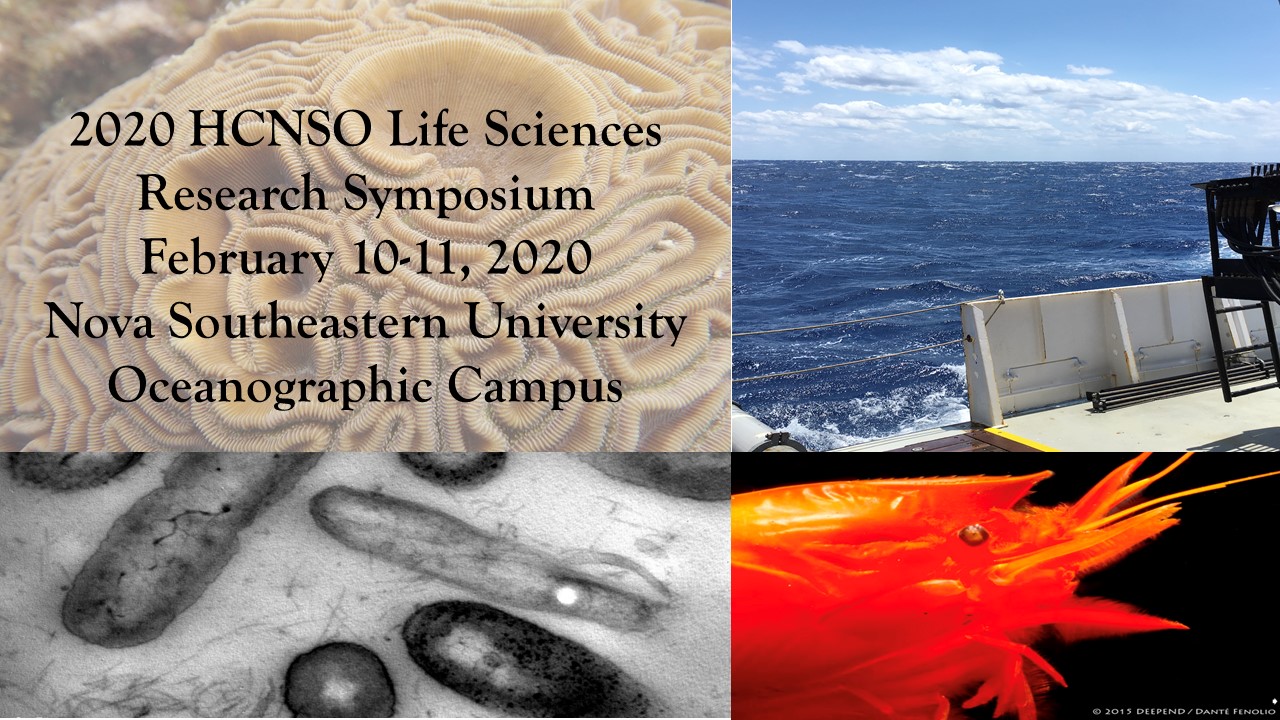Seascape ecology in the deep pelagic Gulf of Mexico
Location
HCNSO Guy Harvey Oceanographic Center Nova Southeastern University
Start
2-10-2020 11:00 AM
End
2-10-2020 11:15 AM
Type of Presentation
Oral Presentation
Abstract
Long-lived and mobile animals create important linkages between spatially and temporally distant ecosystems. Within the deep-sea, fishes play important roles in transferring energy, nutrients and carbon through the water column, across the seafloor, and between onshore and offshore ecosystems. While deep-sea ecosystems have historically been understudied and remain relatively poorly understood due to their sheer size, modern technological developments make the deep sea increasingly accessible to both research and industry on unprecedented scales. Similarly, interest in deep ocean ecosystems has burgeoned as both their ecological importance and potential vulnerability to human impacts is realised. Since the Deepwater Horizon oil spill in (DWHOS) 2010, we have been studying the deep-living pelagic fauna of the Gulf of Mexico as a case study to understand how mobile taxa can connect different ecosystems (e.g. via benthic-pelagic and onshore-offshore coupling); how the distribution patterns of deep-living species change with dynamic environmental conditions; and to develop predictive frameworks to inform management. Here, I will present some of my recent research examining the spatial and temporal dynamics of deep-living pelagic fishes in the Gulf of Mexico, discuss how these findings further our understanding of marine ecosystems as connected, and highly integrated biomes, and describe some future directions for this work.
Seascape ecology in the deep pelagic Gulf of Mexico
HCNSO Guy Harvey Oceanographic Center Nova Southeastern University
Long-lived and mobile animals create important linkages between spatially and temporally distant ecosystems. Within the deep-sea, fishes play important roles in transferring energy, nutrients and carbon through the water column, across the seafloor, and between onshore and offshore ecosystems. While deep-sea ecosystems have historically been understudied and remain relatively poorly understood due to their sheer size, modern technological developments make the deep sea increasingly accessible to both research and industry on unprecedented scales. Similarly, interest in deep ocean ecosystems has burgeoned as both their ecological importance and potential vulnerability to human impacts is realised. Since the Deepwater Horizon oil spill in (DWHOS) 2010, we have been studying the deep-living pelagic fauna of the Gulf of Mexico as a case study to understand how mobile taxa can connect different ecosystems (e.g. via benthic-pelagic and onshore-offshore coupling); how the distribution patterns of deep-living species change with dynamic environmental conditions; and to develop predictive frameworks to inform management. Here, I will present some of my recent research examining the spatial and temporal dynamics of deep-living pelagic fishes in the Gulf of Mexico, discuss how these findings further our understanding of marine ecosystems as connected, and highly integrated biomes, and describe some future directions for this work.


